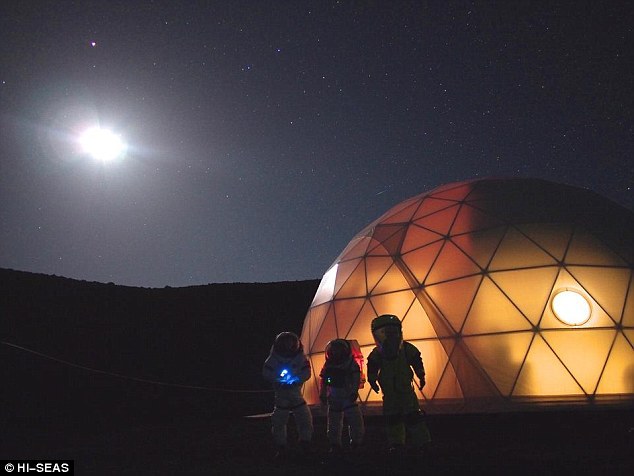What will the settlement look like on Mars?

The Hi-Seas project is designed to find out how people will live in the case of migration to Mars. Six members of the future crew take part in the experiment, where the conditions will be as close as possible to the conditions of human existence on Mars. Eight months, six people will spend on a volcano Main-Loa in a specially constructed house.
Scientists not only want to find out how hard people will adapt, but also how new housing is suitable for human existence in difficult conditions for him. Specially created house has everything you need to live where there is practically nothing. As planned by scientists, if everything goes smoothly, then by 2030, earthlings will be able to land on the next planet.
')
The house has the shape of a hemisphere, very high ceilings and autonomous energy system. This system is based on hydrogen fuel cells. The house also has a modern printer that can print items necessary for life. Thus, participants in the experiment will be able to create the most necessary parts and some tools on their own.

The area of the house is more than 1000 square meters. And all the 8 months the crew will spend on its territory. On the street, subjects will go out exclusively in a spacesuit, as it would on Mars.

The area of the house is divided into several rooms, including bedrooms, a common living room, a kitchen, a dining room, a storage room and supplies. The bedrooms have low bed-mattresses, a corner for work. In general, the situation can be called Spartan - nothing superfluous has been noticed. High ceilings are specifically designed to prevent claustrophobia in humans. The daily schedule of team members includes physical training to maintain health and strength.


Scientists have also foreseen a delay in the communication channel with the “Earth” in 24 minutes.

Hi-Seas project was created with the support of NASA. This is the second experience of such research in an environment close to the Martian situation. A third stage is also planned, which will last several months longer than this. This year, $ 1.2 million was invested in the project.
Source: https://habr.com/ru/post/362253/
All Articles